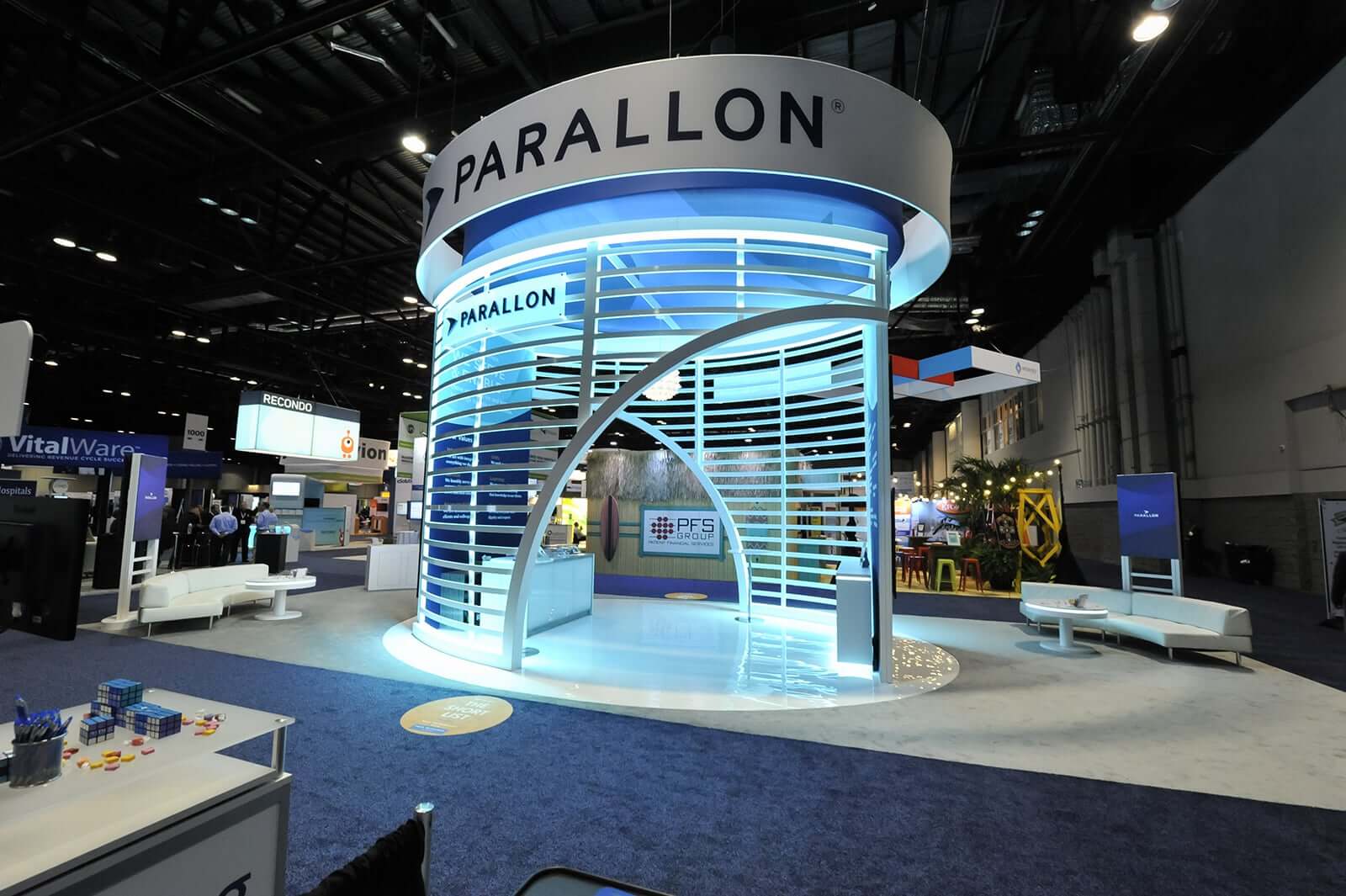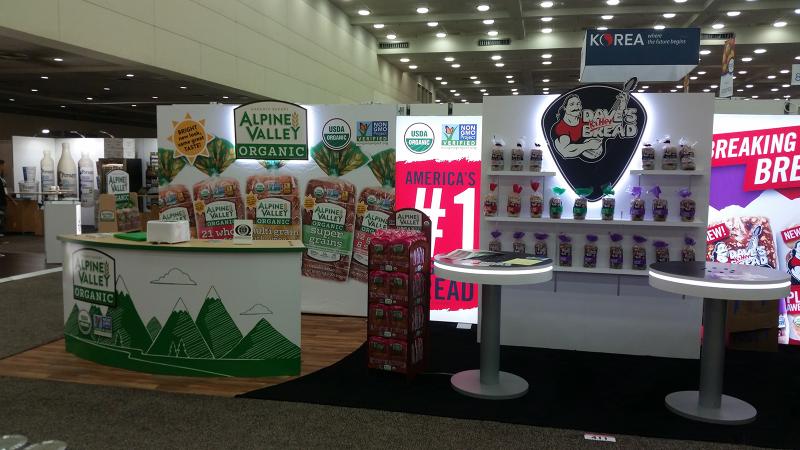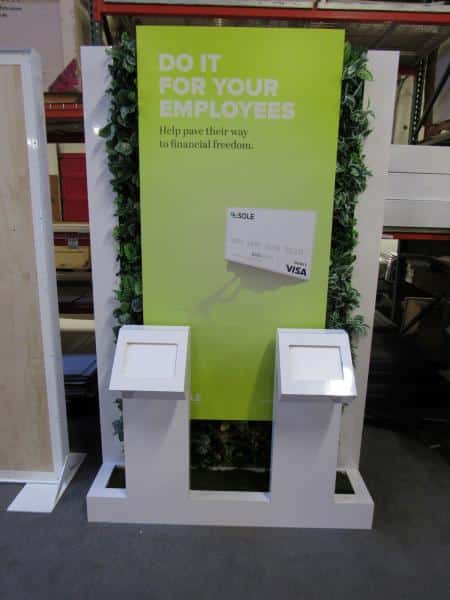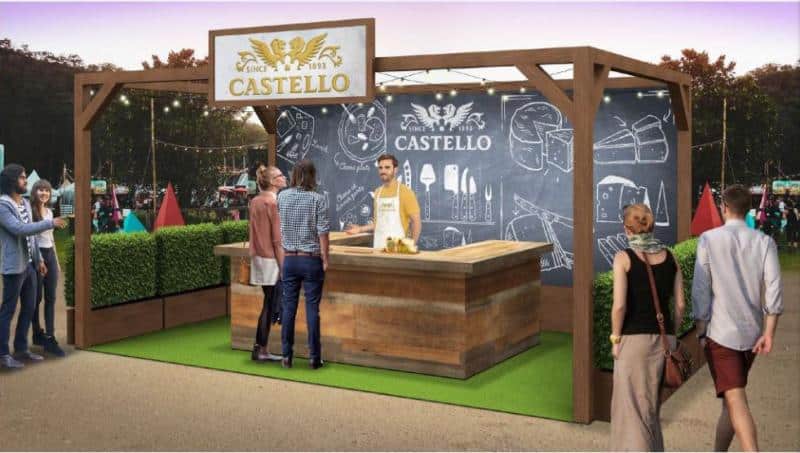Displays for Trade Shows: Enhancing Engagement and Visibility

Displays for trade shows serve as a conduit for businesses to showcase their products and services, with well-designed displays being crucial for making a lasting impression. These displays come in various forms, ensuring that companies can find an option that suits their brand identity and the message they wish to convey. From portable signs and banner stands to elaborate modular exhibits, the choice of display can significantly influence potential clients’ engagement and retention.
Selecting the right display involves more than just aesthetics; it also demands attention to practicalities such as ease of assembly, durability, and transportability. Enhancements such as backlighting, interactive elements, and high-quality graphics can further amplify the impact of a display. However, it’s also essential to balance visual appeal with functional design that effectively communicates the company’s value proposition and facilitates meaningful interactions with customers.
Key Takeaways
-
-
Trade show displays are integral for brand representation and audience engagement at events.
-
-
-
The effectiveness of a display correlates with its design, customization, and the ability to captivate attention.
-
-
-
Practical considerations, such as assembly and transportation, are key to choosing the right trade show display.
-
Understanding Trade Show Displays
Trade show displays are a pivotal element in representing a brand and capturing the attention of attendees. High-quality design and careful selection of quality products are essential for standing out in the competitive environment of a trade show.
Types of Displays for Trade Shows
Several options are available for exhibitors looking to showcase their brand in a trade show. The decision should be influenced by the brand’s message, the type of product or service, and the expected attendee interaction. Common types of trade show booths and displays include:
-
-
Pop-Up Displays: Versatile and easy to set up, they can be used for both small and large scale exhibitions.
-
-
-
Banner Stands: Ideal for capturing attention with high-impact graphics, useful for highlighting specific products.
-
-
-
Modular Exhibits: They offer a custom look with the flexibility of reconfiguration for different shows and spaces.
-
-
-
Island Exhibits: These displays allow for a 360-degree branding opportunity and are often placed centrally in the trade show floor.
-
Selecting the Right Display for Your Brand
The selection of the right trade show display should align with a brand’s goals, target audience, and the message it wishes to highlight and convey. To ensure a successful and impactful trade show presence:
-
-
Determine the size and portability needs of your display considering the typical space at trade shows and storage between events.
-
-
-
Assess the customization options; a highly customized design can significantly increase brand recognition.
-
-
-
Evaluate the durability of the display to ensure it can withstand the rigors of travel and frequent use.
-
-
-
Look for opportunities for branding; displays with flexible branding options can adapt to different marketing campaigns.
-
For more detailed guidance tailored to specific needs, Choosing the Right Trade Show Display: A Comprehensive Guide is a resource that can further help brands make informed decisions.
Key Design and Customization Options

When planning for a trade show, exhibitors should focus on the design and customization of their stand and displays to effectively represent their brand. Choosing the right combination of aesthetics and functionality is crucial for making a memorable impact.
Custom Displays and Graphic Design
Custom displays offer unparalleled opportunities for brand expression and are specifically tailored to meet the exhibitor’s unique needs. Companies can work with designers to incorporate brand identity through customized graphics, artwork, color schemes, and architectural elements. These one-of-a-kind displays are often composed of high-quality materials that provide a solid foundation for innovative graphic design, turning the booth into a visually compelling environment that captures the attention of attendees.
Modular and Portable Display Options
On the other hand, modular displays are a versatile choice, allowing exhibitors to reconfigure sign display, layout and design to suit different spaces and events. They often include elements such as interchangeable graphics and scalable frames, making them a cost-effective and flexible solution. Portable displays, prized for their ease of transport and setup, provide a practical option for exhibitors who frequent multiple shows with quick turnaround times. Though compact, these displays can still be customized with distinctive graphics to create an engaging presentation that travels well.
Maximizing Impact with Display Enhancement

Enhancing trade show displays involves using strategic lighting and interactive elements to captivate customer attention. By incorporating these features, exhibitors can create a visually appealing and engaging environment conducive to attracting and retaining visitor interest.
Lighting and Backlit Displays
Lighting plays a crucial role in exhibition display effectiveness. Backlighting your displays is particularly beneficial, as backlit displays attract the eye, increasing visibility and readability. Exhibitors commonly use LED lights for backlighting, due to their energy efficiency and vibrant output. Properly lit displays can accentuate graphic details and make colors pop, leaving a lasting impression.
Interactive Elements and Accessories
Adding interactive elements such as touchscreen kiosks enhances visitor engagement. These kiosks can serve various functions, from displaying product information to collecting visitor data. Furthermore, incorporating accessories like branded towers can add height and dimension to a booth, making it visible from a distance. Utilizing these elements not only creates a dynamic experience but also aids in effectively communicating brand messaging.

Logistical Considerations
The success of exhibiting such a trade show presence can heavily rely on effective logistics management which includes the efficient transportation and setup of displays, as well as their ongoing maintenance and storage.
Transportation and Setup
Shipping a trade show display requires meticulous planning to ensure all components arrive on time and within budget. The process often starts with transportation planning, which serves as the foundation of trade show display logistics. Companies must coordinate the shipment of booth furniture and materials, which often includes:
-
-
Securing reliable freight services: To prevent delays, select carriers with trade show experience.
-
-
-
Scheduling for delivery: Time the arrival to account for setup windows and any unforeseen delays.
-
-
-
Budgeting for shipping costs: Include potential fees for storage and handling.
-
Once the materials reach the event venue, the setup process begins. This involves:
-
-
Assembling the display: Follow detailed instructions or hire skilled labor.
-
-
-
Electrical and technical setup: Ensure all electronic components are working.
-
It’s critical that the team assembles the display well before the event and production starts to address any issues that may arise.
Display Maintenance and Storage
Maintaining the appearance and functionality of trade show displays is essential for a professional image. Maintenance involves:
-
-
Regular cleaning: Use appropriate cleaning supplies to keep the display looking its best.
-
-
-
Inspection for damage: After each use, inspect and repair any wear and tear to extend the life of the display.
-
For storage, consider:
-
-
Environment: Store the display in a controlled environment to prevent damage.
-
-
-
Accessibility: Keep the display in a location where it can be easily accessed for the next event.
-
-
-
Inventory management: Keep a record of all components and their condition.
-
Proper care and storage of the display ensure it remains in good condition, which can have a significant impact on the overall budget by minimizing the need for costly repairs or replacements.
Achieving Trade Show Success

In the competitive landscape of the trade show and conference industry, achieving success hinges on strategic display alignment with event goals and diligent tracking to improve Return on Investment (ROI).
Aligning Displays with Event Goals
Effective trade show displays are impeccable storytellers, with each element purposefully crafted to support the event’s objectives. They exhibit with confidence, seamlessly integrating brand messaging with captivating visuals that resonate with the intended audience. For instance, a select line of portable trade show banners and displays can both ease the logistical challenge and ensure a high-impact presence.
Measuring and Improving Trade Show ROI
To measure trade show success, businesses must first define clear, quantifiable goals. By establishing metrics such as lead generation numbers, they can gauge performance against expectations. Post-event analysis is equally critical; companies should design their own high-quality trade show display that not only captures attention but also converts interest into measurable outcomes. This data-driven approach leads to continuous improvements, maximizing trade show ROI.
Frequently Asked Questions
In this section, essential aspects of trade show displays are addressed, offering practical insights to optimize attendee engagement, business, and brand representation.
How can businesses effectively design their trade show booth to attract more visitors?
Designing and promoting an effective trade show booth requires an understanding of target audiences and the creation of an engaging environment. Incorporating interactive elements and cohesive branding within the design can greatly increase visitor attraction.
What are some of the latest trends in trade show display design?
Current trends in trade show display design include the use of digital technology for interactive experiences and sustainable materials to appeal to environmentally conscious consumers. Emphasis on minimalist designs with bold graphics is also prevalent.
What factors should be considered when choosing between portable and modular trade show displays?
When deciding between portable and modular booth displays alone, businesses should consider the frequency of trade shows they attend, the ease of transport and setup, and the level of customization required.
How can companies customize their trade show displays to enhance brand visibility?
Customization can be achieved through the use of unique color schemes, branded signage, and tailored content that tells the company’s story. Strategic lighting and multimedia elements can further draw attention and improve company and brand visibility.
What is the typical cost range for setting up a trade show display?
The cost for setting up a trade show display can vary widely, typically ranging from a few hundred dollars for a basic setup to several thousand for a customized, high-end display.
What are the advantages and disadvantages of using fabric pop-up displays at trade shows?
Fabric pop-up displays offer the benefits of being lightweight, easy to set up, and cost-effective. However, they may not provide the same level of durability or support for heavy accessories as other types of displays.
